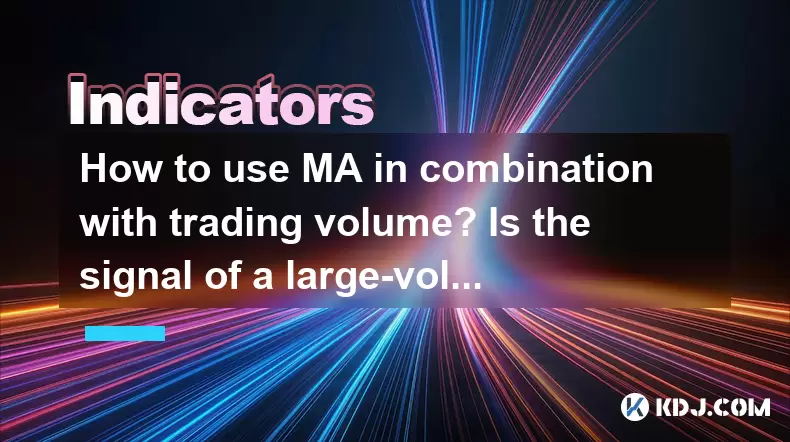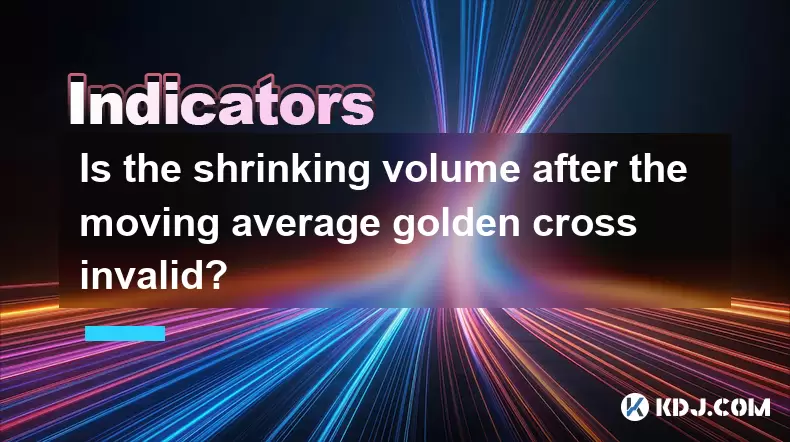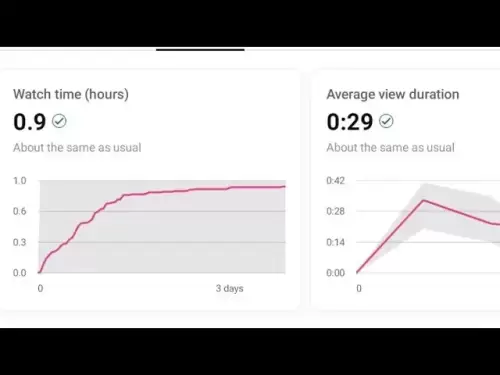-
 Bitcoin
Bitcoin $103,456.1111
0.49% -
 Ethereum
Ethereum $2,414.9631
0.02% -
 Tether USDt
Tether USDt $1.0006
0.05% -
 XRP
XRP $2.1083
0.24% -
 BNB
BNB $634.8760
-0.76% -
 Solana
Solana $139.8437
1.94% -
 USDC
USDC $0.9998
-0.01% -
 TRON
TRON $0.2737
0.97% -
 Dogecoin
Dogecoin $0.1602
0.20% -
 Cardano
Cardano $0.5737
1.08% -
 Hyperliquid
Hyperliquid $32.9779
-2.54% -
 Bitcoin Cash
Bitcoin Cash $474.8886
-1.80% -
 Sui
Sui $2.6272
-1.99% -
 Chainlink
Chainlink $12.4878
0.14% -
 UNUS SED LEO
UNUS SED LEO $8.9234
0.35% -
 Stellar
Stellar $0.2411
-0.18% -
 Avalanche
Avalanche $17.0274
-0.70% -
 Toncoin
Toncoin $2.8936
-1.11% -
 Shiba Inu
Shiba Inu $0.0...01112
-0.58% -
 Litecoin
Litecoin $82.6982
1.33% -
 Hedera
Hedera $0.1423
-0.05% -
 Monero
Monero $314.8455
3.26% -
 Ethena USDe
Ethena USDe $1.0006
0.01% -
 Polkadot
Polkadot $3.4043
1.14% -
 Dai
Dai $0.9999
0.01% -
 Bitget Token
Bitget Token $4.2848
-0.13% -
 Uniswap
Uniswap $6.8748
-5.45% -
 Pepe
Pepe $0.0...09661
0.52% -
 Pi
Pi $0.5359
1.19% -
 Aave
Aave $242.9168
-1.03%
How to use MA in combination with trading volume? Is the signal of a large-volume breakthrough more reliable?
Using MAs and trading volume together can enhance crypto trading; large-volume breakthroughs are more reliable, indicating strong market consensus and trend confirmation.
May 27, 2025 at 10:21 pm

Using Moving Averages (MA) in combination with trading volume can significantly enhance your trading strategy in the cryptocurrency market. Moving Averages are widely used to identify trends and potential reversal points, while trading volume can provide insights into the strength of those trends. When a large-volume breakthrough occurs, it is often considered more reliable due to the increased market participation. This article will explore how to effectively use these tools together and discuss the reliability of signals generated by large-volume breakthroughs.
Understanding Moving Averages
Moving Averages are statistical tools used to analyze data points over a specified period to smooth out price fluctuations and highlight the underlying trend. In the context of cryptocurrency trading, two types of MAs are commonly used: the Simple Moving Average (SMA) and the Exponential Moving Average (EMA).
Simple Moving Average (SMA) calculates the average of a selected range of prices, typically closing prices, over a specific number of periods. For example, a 50-day SMA would add up the closing prices of the last 50 days and divide by 50.
Exponential Moving Average (EMA) gives more weight to recent prices, making it more responsive to new information. The formula for EMA is more complex, but it essentially involves a multiplier to emphasize recent data.
To use MAs effectively, traders often look for crossovers between short-term and long-term MAs. A golden cross occurs when a short-term MA crosses above a long-term MA, signaling a potential bullish trend. Conversely, a death cross happens when a short-term MA crosses below a long-term MA, indicating a potential bearish trend.
The Role of Trading Volume
Trading volume represents the total number of shares or contracts traded within a specified time frame. In cryptocurrency markets, it is the total number of coins traded. Volume is a crucial indicator because it provides insight into the strength of a price move. High volume during a price increase suggests strong buying pressure, while high volume during a price decrease indicates strong selling pressure.
To incorporate volume into your trading strategy, you should monitor volume bars on your charts. Volume bars are typically displayed as vertical bars at the bottom of the price chart. A significant increase in volume can confirm the validity of a price move, making it a more reliable signal.
Combining MA and Trading Volume
Combining Moving Averages with trading volume can provide a more comprehensive view of market trends and potential entry or exit points. Here's how you can effectively use these tools together:
Identify Trend Direction: Use MAs to determine the overall trend. For instance, if the price is above a long-term MA like the 200-day SMA, it indicates an uptrend. If it's below, it suggests a downtrend.
Confirm with Volume: Once you've identified the trend direction, look for volume confirmation. If the price is moving in the direction of the trend with high volume, it reinforces the trend's strength.
Watch for Breakthroughs: A breakthrough occurs when the price moves above or below a significant level or MA. If this breakthrough is accompanied by high volume, it is considered more reliable. For example, if the price breaks above the 50-day SMA with significantly higher volume than usual, it suggests a strong bullish move.
Use Volume for Entry and Exit Points: When considering entry or exit points, look for high volume to confirm your decision. If you're entering a trade based on a bullish signal, ensure that the volume supports the move. Similarly, when exiting a trade, high volume can confirm the validity of the exit signal.
The Reliability of Large-Volume Breakthroughs
A large-volume breakthrough is often considered more reliable because it indicates strong market participation. When a large number of traders are involved in a price move, it is less likely to be a false signal. Here's why:
Market Consensus: High volume suggests that many traders agree on the direction of the price move, creating a stronger consensus.
Liquidity: High volume increases market liquidity, making it easier to enter or exit positions without significantly affecting the price.
Confirmation of Trend: A large-volume breakthrough can confirm the continuation of an existing trend or the start of a new one. For example, if the price breaks above a resistance level with high volume, it confirms the bullish trend and suggests that the resistance may now act as support.
Practical Example of Using MA and Volume
Let's walk through a practical example of how to use MA and volume in a trading scenario:
Identify the Trend: You notice that the price of Bitcoin is consistently trading above its 200-day SMA, indicating a long-term uptrend.
Look for a Breakthrough: You're waiting for the price to break above the 50-day SMA, which has been acting as resistance.
Monitor Volume: As the price approaches the 50-day SMA, you notice that the volume starts to increase significantly. This suggests that there is strong buying interest.
Confirm the Breakthrough: The price finally breaks above the 50-day SMA with a volume spike that is much higher than the average volume over the past few weeks. This large-volume breakthrough confirms the bullish signal.
Enter the Trade: With the trend confirmed by both the MA and the volume, you decide to enter a long position. You set your stop-loss just below the 50-day SMA to manage your risk.
Monitor the Trade: As the trade progresses, you continue to monitor the volume. If the volume remains high and the price continues to move upward, it reinforces your decision to stay in the trade. If the volume starts to decrease significantly, it may be a sign to consider exiting the trade.
FAQs
Q: Can I use different time frames for MAs and volume analysis?
A: Yes, you can use different time frames for your MAs and volume analysis depending on your trading style. For example, short-term traders might use a 10-day SMA and 20-day EMA with hourly volume data, while long-term investors might prefer a 50-day SMA and 200-day SMA with daily volume data. The key is to ensure that the time frames you choose align with your trading goals and strategy.
Q: How do I determine what constitutes 'high volume' in a cryptocurrency?
A: High volume in a cryptocurrency can be determined by comparing the current volume to historical averages. Most trading platforms provide a volume indicator that shows the average volume over a specified period. If the current volume is significantly higher than this average, it can be considered high. Additionally, you can look for volume spikes that stand out visually on the chart.
Q: Are there any other indicators I can use in conjunction with MA and volume?
A: Yes, other indicators that can be used in conjunction with MA and volume include the Relative Strength Index (RSI), Moving Average Convergence Divergence (MACD), and Bollinger Bands. The RSI can help identify overbought or oversold conditions, the MACD can provide additional trend confirmation, and Bollinger Bands can highlight potential volatility and price breakouts. Combining these indicators can provide a more robust trading strategy.
Q: How can I avoid false signals when using MA and volume?
A: To avoid false signals, it's important to use multiple time frames and confirm signals with other indicators. For example, if you see a potential breakthrough on a daily chart, check the weekly chart to see if the trend is supported. Additionally, waiting for a candlestick to close above or below an MA before acting on a signal can help filter out false breakouts. Lastly, always consider the broader market context and news events that might affect price movements.
Disclaimer:info@kdj.com
The information provided is not trading advice. kdj.com does not assume any responsibility for any investments made based on the information provided in this article. Cryptocurrencies are highly volatile and it is highly recommended that you invest with caution after thorough research!
If you believe that the content used on this website infringes your copyright, please contact us immediately (info@kdj.com) and we will delete it promptly.
- Inherited Riches: Rare Coin Collection Valued at £6,000 – Is Your Change Worth a Fortune?
- 2025-06-22 12:25:12
- Fiat-Backed Stablecoins, Tokenized Treasuries, and DeFi: A New York Minute on the Future of Finance
- 2025-06-22 12:25:12
- BlockDAG, Tron, and Toncoin: Navigating the Crypto Landscape in 2025
- 2025-06-22 12:35:12
- Navigating the Wild West: Rug Pulls, Meme Coins, and Market Scams in Crypto
- 2025-06-22 12:35:12
- Ruvi AI: The Audited Token Poised to Outshine Shiba Inu
- 2025-06-22 10:25:12
- Dypians, DeFi, and Sei Network: A Deep Dive into the Latest Trends
- 2025-06-22 10:25:12
Related knowledge

Does the second surge in the RSI overbought zone induce more?
Jun 22,2025 at 08:35am
Understanding the RSI Overbought ZoneThe Relative Strength Index (RSI) is a momentum oscillator commonly used in technical analysis to measure the speed and change of price movements. It ranges from 0 to 100, with values above 70 typically considered overbought and values below 30 considered oversold. When the RSI enters the overbought zone for the firs...

Does the sudden contraction of ATR indicate the end of the trend?
Jun 20,2025 at 11:14pm
Understanding ATR and Its Role in Technical AnalysisThe Average True Range (ATR) is a technical indicator used to measure market volatility. Developed by J. Welles Wilder, ATR calculates the average range of price movement over a specified period, typically 14 periods. It does not indicate direction—only volatility. Traders use ATR to gauge how much an ...

Is it invalid if the DMI crosses but the ADX does not expand?
Jun 21,2025 at 09:35am
Understanding the DMI and ADX RelationshipIn technical analysis, the Directional Movement Index (DMI) consists of two lines: +DI (Positive Directional Indicator) and -DI (Negative Directional Indicator). These indicators are used to determine the direction of a trend. When +DI crosses above -DI, it is often interpreted as a bullish signal, while the opp...

How to filter false signals when the SAR indicator frequently flips?
Jun 21,2025 at 08:43pm
Understanding the SAR Indicator and Its BehaviorThe SAR (Stop and Reverse) indicator is a popular technical analysis tool used in cryptocurrency trading to identify potential reversals in price movement. It appears as a series of dots placed either above or below the price chart, signaling bullish or bearish trends. When the dots are below the price, it...

Is the trend continuation when the Williams indicator is oversold but there is no rebound?
Jun 20,2025 at 11:42pm
Understanding the Williams %R IndicatorThe Williams %R indicator, also known as the Williams Percent Range, is a momentum oscillator used in technical analysis to identify overbought and oversold levels in price movements. It typically ranges from 0 to -100, where values above -20 are considered overbought and values below -80 are considered oversold. T...

Is the shrinking volume after the moving average golden cross invalid?
Jun 22,2025 at 10:42am
Understanding the Moving Average Golden Cross in CryptocurrencyIn the world of cryptocurrency trading, technical indicators play a crucial role in decision-making. One such indicator is the moving average golden cross, which occurs when a short-term moving average crosses above a long-term moving average, typically signaling a bullish trend. This event ...

Does the second surge in the RSI overbought zone induce more?
Jun 22,2025 at 08:35am
Understanding the RSI Overbought ZoneThe Relative Strength Index (RSI) is a momentum oscillator commonly used in technical analysis to measure the speed and change of price movements. It ranges from 0 to 100, with values above 70 typically considered overbought and values below 30 considered oversold. When the RSI enters the overbought zone for the firs...

Does the sudden contraction of ATR indicate the end of the trend?
Jun 20,2025 at 11:14pm
Understanding ATR and Its Role in Technical AnalysisThe Average True Range (ATR) is a technical indicator used to measure market volatility. Developed by J. Welles Wilder, ATR calculates the average range of price movement over a specified period, typically 14 periods. It does not indicate direction—only volatility. Traders use ATR to gauge how much an ...

Is it invalid if the DMI crosses but the ADX does not expand?
Jun 21,2025 at 09:35am
Understanding the DMI and ADX RelationshipIn technical analysis, the Directional Movement Index (DMI) consists of two lines: +DI (Positive Directional Indicator) and -DI (Negative Directional Indicator). These indicators are used to determine the direction of a trend. When +DI crosses above -DI, it is often interpreted as a bullish signal, while the opp...

How to filter false signals when the SAR indicator frequently flips?
Jun 21,2025 at 08:43pm
Understanding the SAR Indicator and Its BehaviorThe SAR (Stop and Reverse) indicator is a popular technical analysis tool used in cryptocurrency trading to identify potential reversals in price movement. It appears as a series of dots placed either above or below the price chart, signaling bullish or bearish trends. When the dots are below the price, it...

Is the trend continuation when the Williams indicator is oversold but there is no rebound?
Jun 20,2025 at 11:42pm
Understanding the Williams %R IndicatorThe Williams %R indicator, also known as the Williams Percent Range, is a momentum oscillator used in technical analysis to identify overbought and oversold levels in price movements. It typically ranges from 0 to -100, where values above -20 are considered overbought and values below -80 are considered oversold. T...

Is the shrinking volume after the moving average golden cross invalid?
Jun 22,2025 at 10:42am
Understanding the Moving Average Golden Cross in CryptocurrencyIn the world of cryptocurrency trading, technical indicators play a crucial role in decision-making. One such indicator is the moving average golden cross, which occurs when a short-term moving average crosses above a long-term moving average, typically signaling a bullish trend. This event ...
See all articles
























































































